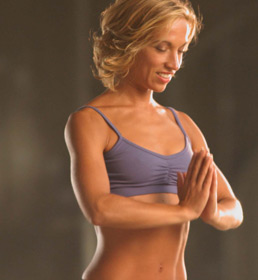The other day a friend who plays on a rec league women's ice hockey team showed me an email she had received from a fellow teammate. Part of the email referenced their coach's upcoming birthday. The team is trying to come up with something to give him.
This was the suggestion of the player (I have edited out the names):
As for [coach's] birthday, I think all the youngsters (X, Y, Z, etc) could give him sex.She goes on to explain how this would be a treat for the coach and also for his wife, another player, apparently so she could be relieved of
her duty to "give him sex."
I probably don't have to explain that my reaction was marked by extreme disgust and disappointment.
My reaction was also likely made somewhat more severe by the sports sociology class I have been auditing this semester. It has been a very odd experience for me, coming from a women's studies background, to be in a class where my radical feminist views are in the minority. (I realize of course that to be in the majority anywhere is a great privilege and I am thankful for that and have learned quite a bit about negotiating one's feminism in a non (even anti at times) feminist environment.)
We have been talking about, well I have been mentioning anyway, in class the fact that people frequently participate in their own oppression. The other night we heard a presentation by a female student on
Mariah Burton Nelson's The Stronger Women Get, the More Men Love Football. The book isn't actually all about football, but rather about football as exemplifying a male sports culture that reifies masculinity and demonizes everything else. She spends considerable time discussing sexual violence perpetrated by athletes and also sexual abuse between coaches and athletes.
Said student thought the book was filled with "conspiracy theories." Also, she claimed Burton Nelson was "biased" because she herself was abused by a coach as a teenager.
Perhaps this was her way of dealing with--by denying--the many evils of sport that MBN presents. The book conveys many stories of those who have been abused and offers more than just empircal evidence to illustrate the very real and widespread problem of abuse.
So the comment about the coach sleeping with his players was especially irritating to me. It's a joke in very poor taste given that this is a reality for many athletes--young female athletes with older male coaches especially, as is the situation this player lays out in her email.
Class discussion of the book also focused on men's locker room banter. MBN discusses this in the context of violence against and degradation of women but also the issue of female reporters in the locker room.
One student, a former football player and currently a coach, defended, to an extent, this speech as part of football locker room culture. He said people say things to fit in but do not necessarily believe them nor would they act on them. He admitted he himself had said things in the locker room that he would never say outside the locker room.
I think that's a lousy excuse and likely not true for many players. Players become enculturated and begin to believe the things that are being said. When football is your life, inside and outside the locker room becomes an almost arbitrary distinction, an issue of simple geography.
Hockey player's comment above illustrates this. This statement seems like something that would be expressed in a locker room (and even in that context it would be wrong and someone should speak up) but it wasn't. As private as some believe it to be, email is part of the larger public world. And you never know where it is going to end up. It could get into the hands of someone like me!
And finally, what was disappointing was the "equality" that this email evidenced. Women and girls now play hockey, in ever-growing numbers. Apparently the opportunity to play has also created, at least for this woman, a need to adhere to the same anti-woman sentiment that predominates much of the sport.
The student in sport soc who disliked the book mentioned said that MBN's bias came because "she has a stake in this." We all have a stake in "this." I thought that was the most obvious point to be taken from the book. It's possible that those women, and non-football players, who deny most vehemently the implications of Burton Nelson's work on their own lives are at the greatest risk.
















